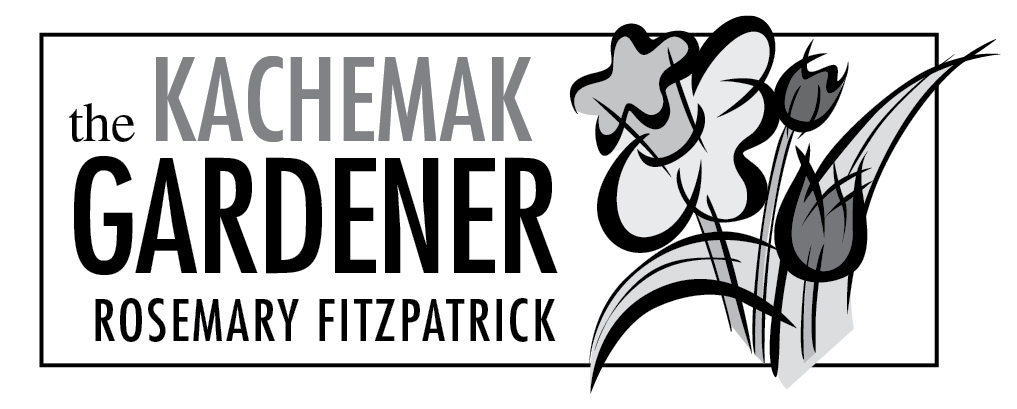What a glorious day.
The heat has been turned on in the greenhouse and the high/low thermometer is in place. If the heaters are holding the temperature no lower than 40 to 45 degrees, I will set out the tomatoes, cucumbers, artichokes, leeks and odds and ends of flowers that are thriving in the guest room. I can hardly wait, once these seedlings hit the greenhouse there is no looking back — we are on our way.
The bulbs that I unceremoniously stuffed here and there last fall are pushing up. Some are under the spruce boughs that I made sure were in place after the first hard freeze. That always presents a dilemma — when to remove the boughs. I need to be patient; you, too. They are there to prevent damage during the coming days of the freeze/thaw cycle that is the doom of so many perennials and biennials. But the bulbs want to bloom, good grief. I will stay the course. It really is much to early to remove whatever mulch you have chosen.
A positive accomplishment today was getting a start on pruning the red twig dogwoods of which there are three. Lopers and a good saw are indispensable for pruning. These two tools will make your life easier and the clean cuts will be appreciated by the plant.
I am running on the assumption that you have these beauties in your garden. If not, get some. They have truly red branches and here is where the pruning comes in. You need to remove the branches that are no longer red. Truly. New growth will glow with the signature red and fill in very fast. By early summer you won’t even know you removed any branches. Take the branches out at the base, do NOT just cut the ends off. If you do weird, unattractive tuffs of branches will sprout at the ends. Unfortunate.
The birds love shrubs, any shrubs. They nestle in the mock orange, lilacs and honeysuckle. Early morning and late evening are the times to observe the action. In the morning the birds start to flutter around within the shrub, then chirp, then sing. Lovely. The opposite in the evening. Special.
Pruning benefits the mock orange. But leave your lilacs alone. They set their buds for blooms in the fall. If you mess with them now, you will cheat yourself of the show that is bound to enliven July.
I know, those who live in the Lower 48 are baffled when they see our lilacs in July. I liken our summer to the Northwest Flower and Garden Show in Seattle. There you will encounter all kinds of plants blooming at once when, if left to their own devices, they would never ever bloom at the same time. They have been forced into performance, much to our delight in the depths of February. But, think about it, we have the same thing, sort of, going on here. At lot happens in July and August.
Let’s take a look at your roses. I’m hoping you have planted an abundance of rugosa roses. They are hardy, the moose will nosh on them but not take them out, they bloom like crazy, spread. There is little not to like. Well, maybe the pruning. … They, too, will benefit from the lopers. Again, take the oldest canes out at the base. Roses bloom on new wood so get some new wood going, especially if they have been holding back on the blooms in the past couple of seasons.
I have noticed that an annual pruning of roses makes life easier. If I let them go for, say three seasons, there is a tangled mess to deal with. Not nice. I invested in a pair of rose gloves. These beauties have leather gauntlets that will protect you up to your elbows. I also wear a hat or else my hair can get hopelessly tangled in the canes. Oh, and let’s not forget the coveralls that my son gave me, very handy indeed. I’m making roses sound like work. Everything is, but worth the effort. The beauty here is they only need a good going over in the spring and then they take care of themselves the rest of the season. Lovely. Can’t argue with that.
I have just returned from the Lower 48 and observed very gorgeous standard roses in full bloom, a sight to behold. But they come with a price — disease. I consider myself lucky that these roses won’t thrive here. The rugosas do and you will be rewarded with blooms and fragrance that commercial roses lack.
Get yourself some rugosa roses. Interplant them with lilacs and clematis alpina, tuck some crocus in there, and you are good to go. There are not enough roses or lilacs in this little town. I’m hoping that you will be part of the solution to this perceived problem.
Now that you have your shrubs pruned and looking tidy, run the trimmings through your shredder. Shredder? They do come in handy. Mine accepts any woody branches (and raspberry canes) but balks at anything that is green, or wet like the stalks of broccoli or Brussels sprouts, which I really and truly wish to shred. These get hacked up with the machete. Take your shredded material and throw it on the compost pile, nice place for it.
You can also put your trimmings to use as trellis material, or stakes for lilies and whatever else you have that needs support. They are unobtrusive, certainly inexpensive, and good enough for one season. Think about it.
We have enjoyed an exceptionally mild winter, in stark contrast to 2012-13 Winter of Ice, which I hope never, ever repeats itself. Everything is showing signs of life, spring really is out there somewhere. Be patient, don’t take off the mulch … .
Rosemary Fitzpatrick is a longtime Homer gardener.


